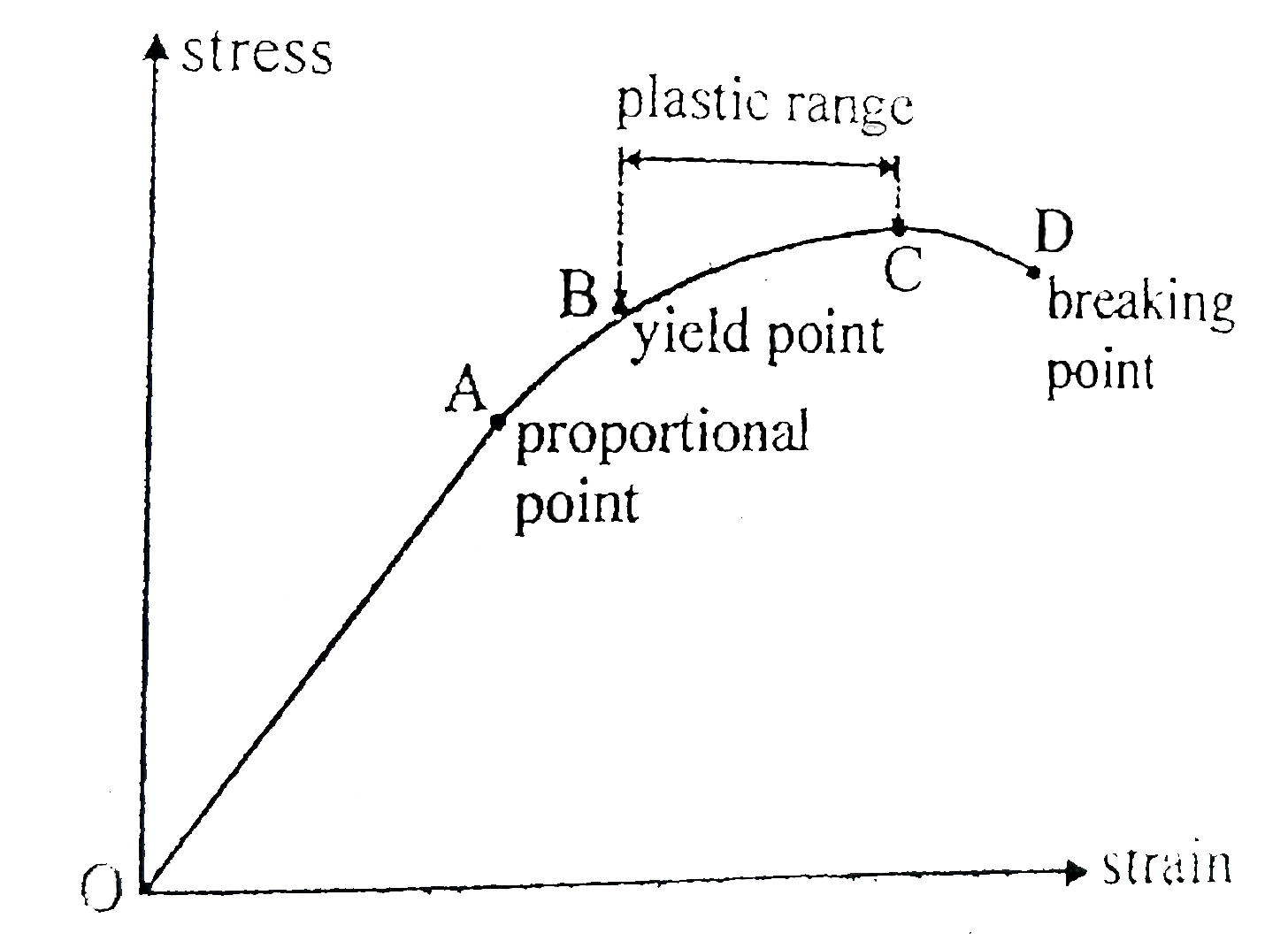Within the elastic limit, stress is directly proportional to strain produced in a body is the statement of
Step by step video & image solution for Within the elastic limit, stress is directly proportional to strain produced in a body is the statement of by Physics experts to help you in doubts & scoring excellent marks in Class 12 exams.
Updated on:21/07/2023Similar Questions
You know that the force applied on a body is directly proportional to the acceleration produced in the body. Write an equation to express this situation and plot the graph of the equation.
View SolutionA wire fixed at the upper end stretches by length l by applying a force F. The work done in stretching is
View Solution
Knowledge Check
For a steel wire, stress is directly proportional to strain. This is possible only when
Athe wire undergoes plastic deformation.Bwire is loaded till the breaking point.Cwire is loaded till the elastic limit.Dwire exhibits neck formation.The force of freely falling body is directly proportional to
Amass of bodyBacceleration of bodyCvelocity of bodyDboth (a) and (b)Within the elastic limit, the ratio of shear stress and shearing strain is called
AYBKCηDσ
The mechanical stress of a charged conductor is directly proportional to
View SolutionThe energy radiated by a black body is directly proportional to :
View SolutionFigure shows the relationship between tensile stress and strain for a typical material. Below proportional point A, stress is directly proportional to strain which means Young's moudulus (Y) is a constant. In this region the material obeys Hooke's law.

Provided the strain is below the yield point 'B' the material returns to its original shape and size when the force is removed. Beyond the yield point, the material retains a permancnt deformation after the stress is removed. For stresses beyond the yeld point, the material exhibit plastic flow, which means that it continues to elongate for little increases in the stress. Beyond C a local constriction occurs. The material fractures at D (i.e. breaking point). The graph below shows the stress-strain curve for 4 different materials.

Material which is good for making wires by stretching is
View SolutionFigure shows the relationship between tensile stress and strain for a typical material. Below proportional point A, stress is directly proportional to strain which means Young's moudulus (Y) is a constant. In this region the material obeys Hooke's law.

Provided the strain is below the yield point 'B' the material returns to its original shape and size when the force is removed. Beyond the yield point, the material retains a permancnt deformation after the stress is removed. For stresses beyond the yeld point, the material exhibit plastic flow, which means that it continues to elongate for little increases in the stress. Beyond C a local constriction occurs. The material fractures at D (i.e. breaking point). The graph below shows the stress-strain curve for 4 different materials.

Material which is most brittle is
View SolutionAccording to Hooke's law, within the elastic limit stress/strain = constant. This constant depends on the type of strain or the type of force acting. Tensile stress might result in compressional or elongative strain, however, a tangential stress can only cause a shearing strain. After crossing the elastic limit, the material undergoes elongation and beyond a stage beaks. All modulus of elasticity are basically constants for the materials under stress.
If stress/strain is x in elastic region and y in the region of yield, then
View Solution
